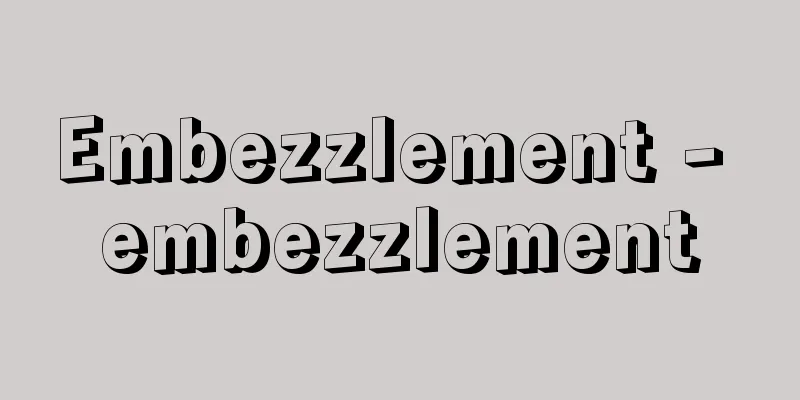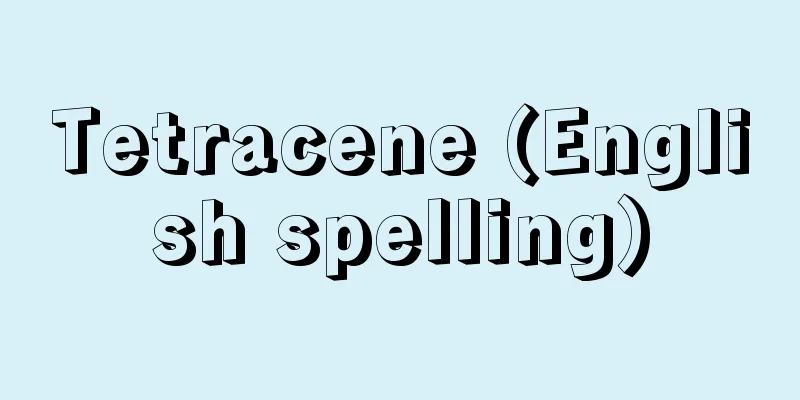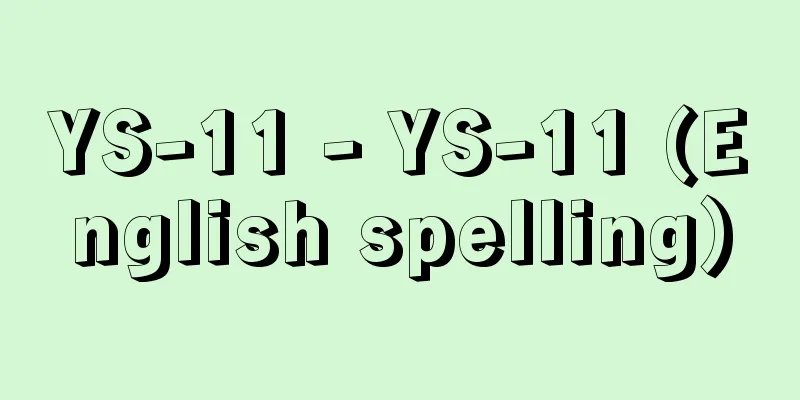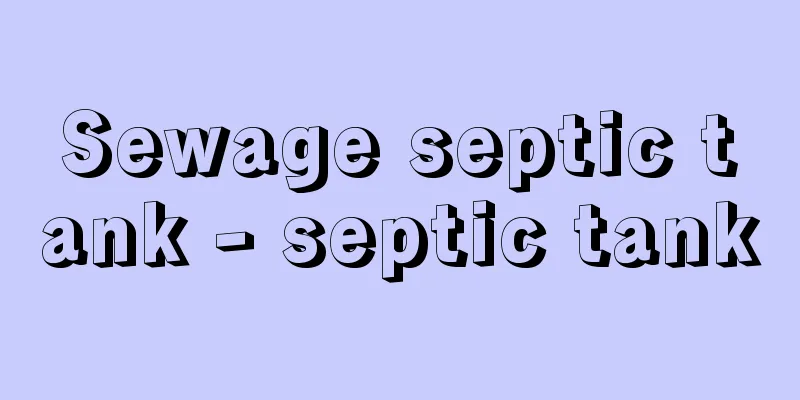Embezzlement - embezzlement

|
In the narrow sense, it refers to the crime of taking possession of another's property that is in one's possession (Article 252 of the Penal Code). In the Penal Code, Book 2, Chapter 38, it stipulates embezzlement (Article 252), embezzlement in the course of business (Article 253), and embezzlement of lost property (Article 254) as "crimes of embezzlement," and in the broad sense, all of these are referred to as embezzlement. In this section, when it is simply referred to as "embezzlement," it refers to embezzlement in the narrow sense (simple embezzlement). In academic circles, the crime of embezzlement is distinguished between embezzlement of entrusted property and embezzlement of property left in one's possession, depending on whether the possession of the property is premised on a trust relationship (described below). Embezzlement and embezzlement in the course of business belong to the former, while embezzlement of lost property belongs to the latter. Embezzlement is the crime of "misappropriating property that belongs to another person in one's possession" (Penal Code, Article 252, Paragraph 1). Embezzlement in the course of business is when "misappropriating property that belongs to another person in the course of business" (Penal Code, Article 253. "Business" refers to a repeated or continuing activity, and is not necessarily limited to work-related or occupational). In contrast, embezzlement of lost property, etc., is also known as embezzlement of property left in one's possession, and is the crime of taking "lost property, driftwood, and other property of another person that has left one's possession" (the objects include things that do not belong to anyone, such as lost property and driftwood, as well as things that are mistakenly taken possession of or handed over to one by another person. See Lost Property Law, Article 2). [Tetsuro Nawa] Requirements for the crime of embezzlementIn the Japanese Criminal Code, the basic crime of embezzlement is the crime of embezzlement of entrusted property, and the typical example of this is the crime of embezzlement. Therefore, we will consider the crime of embezzlement below (note that embezzlement in the course of business is also a crime of embezzlement of entrusted property, so the following explanation is the same for both). The objective requirements of this crime are ① property of another person in one's possession, ② a relationship of entrustment, and ③ the act of embezzlement, and according to precedents and the majority opinion, the subjective requirements are ④ the intent to embezzle, and ⑤ the intention to obtain illegally. (1) The object of this crime The object is "something belonging to another person in one's possession." However, "even if it is one's own property, if one is ordered to keep it by a public office" (this applies when property is seized as a forced execution or delinquent tax disposition due to default on a debt or arrears, and the debtor or defaulter keeps it. See Article 123 of the Civil Execution Law and Articles 60 and 61 of the National Tax Collection Law), it is treated in the same way (Article 252, Paragraph 2 of the Penal Code). The "thing" referred to in this crime includes movable property and immovable property, and the issue is who owns and possesses it. In this regard, ownership in the sale of goods is transferred from the seller to the buyer when the contract is concluded or the price is paid. If the seller then sells the object to a third party before delivery (double sale), the object falls under "someone else's property in his/her possession" and this crime is established. Also, in the sale of stocks, if the seller retains ownership as collateral for bonds until the payment is fully paid, this crime can be established if the buyer disposes of it at his/her own discretion. In contrast, with regard to money, due to its special nature, ownership and possession are one and the same, so even if a person entrusted with the custody of money (value) takes it, if he/she has the intention or ability to return it, this crime is generally not established. However, money with a specified purpose or sealed money (money sealed in an envelope, etc.) is a specific object, so taking it constitutes this crime. The possession in embezzlement includes not only actual possession (actual control of an object) but also legal possession. Of these, legal possession is when one has the legal right to dispose of an object, so for example, if a company's accounting staff member keeps and manages a bankbook or cash card in the company's name for business purposes, and withdraws money by misusing the company's seal or PIN, this constitutes embezzlement, not theft against the company (in this case it would be considered embezzlement in the course of business). (2) Relationship of trust Embezzlement is a crime that involves causing property damage in violation of a trust (confidential) relationship between a trustor and a trustee regarding the possession of an object. The reason for the existence of such a trust relationship is generally based on laws and contracts, but it can also be based on custom or reason. (3) The meaning of embezzlement The appropriation theory and the exceeding of authority theory are in sharp conflict on this point. According to the appropriation theory, embezzlement requires the intention to obtain illegally, and is interpreted as any act that realizes (expresses) the "intention to obtain illegally." Here, the "intention to obtain illegally" means the intention to dispose of the property in a way that only the owner can do, despite not having the authority to do so, in violation of the entrusted duties. In contrast, according to the exceeding of authority theory, embezzlement is interpreted as the trustee's act of exceeding his authority, contrary to the spirit of the entrustment. In this regard, if the trustee disposes of property for temporary use or for the purpose of destruction or concealment, the former theory generally denies the crime, since there is no intention to obtain illegally, while the latter theory interprets the crime as being established when authority is exceeded. Regardless of which theory is used, however, embezzlement includes not only legal dispositions such as selling, exchanging, donating, or pawning, but also de facto dispositions such as spending, misappropriating, refusing to return, or destroying the property. [Tetsuro Nawa] [Reference] |Source: Shogakukan Encyclopedia Nipponica About Encyclopedia Nipponica Information | Legend |
|
狭義には、自己の占有する他人の物を領得する罪をいう(刑法252条)。刑法第2編第38章は、「横領の罪」として、横領罪(252条)、業務上横領罪(253条)のほか、遺失物等横領罪(254条)を規定しており、広義には、これらすべてを横領罪という。本項で単に「横領罪」とした場合は、狭義の横領罪(単純横領罪)をさす。横領の罪は、物の占有が委託関係(後述)を前提とするか否かによって、学問上、委託物横領罪と占有離脱物横領罪とが区別される。横領罪と業務上横領罪が前者に属し、遺失物等横領罪は後者に属する。 横領罪は、「自己の占有する他人の物を横領」する罪である(刑法252条1項)。また、業務上横領罪は、「業務上自己の占有する他人の物を横領」する場合である(同法253条。「業務」とは反覆または継続して行われる活動であり、必ずしも仕事上や職業上のものに限らない)。これに対して、遺失物等横領罪は、占有離脱物横領罪とよばれるように、「遺失物、漂流物その他占有を離れた他人の物」を領得する罪である(その客体には、遺失物、漂流物のように何人(なんぴと)の占有にも属さない場合のほか、他人の物を誤って占有した場合や他人から誤って手渡された場合が含まれる。遺失物法2条参照)。 [名和鐵郎] 横領罪の要件横領の罪は、日本の刑法では委託物横領罪が基本とされ、その典型が横領罪である。そこで、以下、横領罪について検討する(なお、業務上横領罪も委託物横領罪であるから、以下の説明は共通する)。本罪の客観的要件としては、①自己の占有する他人の物、②委託関係、③横領行為があり、主観的要件としては、判例・多数説によれば、④横領の故意のほか、⑤不法領得の意思を要する。 (1)本罪の客体 その客体は「自己の占有する他人の物」である。ただ、「自己の物であっても、公務所から保管を命ぜられた場合」(債務不履行や税滞納によって強制執行や滞納処分として所有物を差押さえられえたが、債務者や滞納者がこれを保管している場合がこれにあたる。民事執行法123条、国税徴収法60条、61条参照)はこれと同様に扱われる(刑法252条2項)。本罪にいう「物」には動産と不動産が含まれ、その所有と占有はだれに属するかが問題となる。 この点につき、物の売買における所有権は、契約成立または代金支払いによって売主から買主に移転するから、そののち、引渡し前に、売主が当該目的物を第三者に売却(二重売買)する場合、目的物は「自己の占有する他人の物」に該当し、本罪が成立する。また、株式の売買において売主が債券の担保として代金完済まで所有権を留保している場合には、買主がこれを勝手に処分すれば本罪に該当しうる。これに対して、金銭については、その特殊性から所有と占有とは一体的であるから、金銭(価値)の保管を委ねられた者がこれを領得しても、返還の意思や能力があれば、一般的には本罪は成立しない。しかし、使途目的が特定された金銭や封金(封筒などに入れて封をした金銭)は特定物であるから、これを領得すれば本罪にあたる。 横領罪の占有には事実上の占有(物を現実に支配していること)のほか、法律上の占有も含まれる。このうち、法律上の占有とは物に対する法的処分権を有する場合であるから、たとえば会社の経理担当者が会社名義の預金通帳やキャッシュカードを業務上保管・管理する場合、会社の印鑑や暗証番号を悪用して預金を引き出せば、会社に対する窃盗罪ではなく、横領罪が成立する(この場合は業務上横領罪にあたる)。 (2)委託関係 横領罪は、物の占有につき委託者と受託者との間に委託(信任)関係が存在することを前提として、これに違背して財産的損害を与えることを内容とする。このような委託関係の発生原因は、法令や契約による場合が一般的であるが、慣習や条理に基づく場合も含まれる。 (3)横領の意義 この点につき領得行為説と越権行為説とが大きく対立する。領得行為説によれば、不法領得の意思を要すると解する立場から、横領とは「不法領得の意思」を実現(発現)するすべての行為と解される。ここに「不法領得の意思」とは、委託の任務に背いて、その物につき権限がないのに所有者でなければできないような処分をする意思である。これに対して、越権行為説によれば、横領とは、受託者が、委託の趣旨に反して権限を逸脱する行為を行うことと解される。この点に関して、受託者が一時使用の目的や毀棄(きき)・隠匿の目的で財物を処分した場合、一般的に、前説では不法領得の意思がないとして本罪を否定し、後説では権限を逸脱する場合に本罪が成立するものと解される。ただ、いずれの説によっても、横領行為には、売却、交換、贈与、質入れなどの法律上の処分のほか、消費、着服、返還拒絶、損壊などの事実上の処分も含まれる。 [名和鐵郎] [参照項目] |出典 小学館 日本大百科全書(ニッポニカ)日本大百科全書(ニッポニカ)について 情報 | 凡例 |
Recommend
Colored Nunat - Colored Nunat
...Although there are some mixed-race people of N...
Vaduz - Vaduz (English spelling)
The capital of the Principality of Liechtenstein,...
Kotohira Shrine
Located in Kotohira-cho, Nakatado-gun, Kagawa Pre...
Akanezumi (English name) Large Japanese field mouse
It is a member of the rodent family of mammals. I...
Eyestalk hormone - Cancer hormone
Hormones are a type of hormone secreted from the e...
A compassionate and gracious heart - Tajobushin
A full-length novel by Satomi Ton. It was seriali...
Eternal prohibition on the sale and purchase of farmland - Denpatai ei baibaikin shirei
Along with the law Bunchi Shigenori (1673) which p...
pigeon's-foot
…The leaves are opposite and divided into three l...
Alexandar - Arekusandaru
…Then, in December 1918, immediately after the co...
Mawāli (English spelling)
The plural form of the Arabic word mawlā generally...
Stephanandra Tanakae (English spelling)
…[Yamanaka Futoshi]. … *Some of the terminology t...
Hershel effect
… [Special infrared photography] When silver hali...
Caribbean Current
…The temperature is about 25-28°C in the south of...
Subtropical - Anetta
The northern and southern hemispheres of the Eart...
Polydactyly
What is the disease? Polydactyly is the formation...









